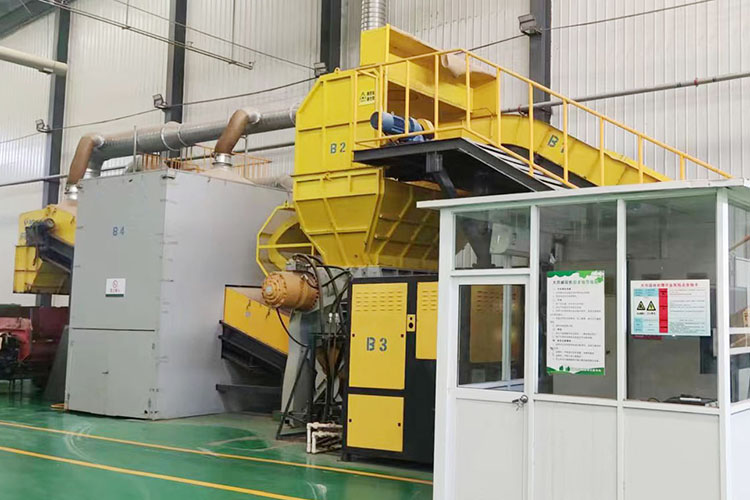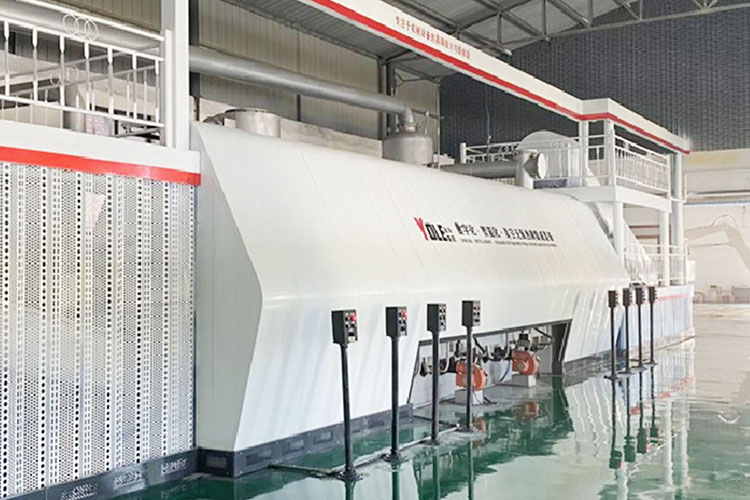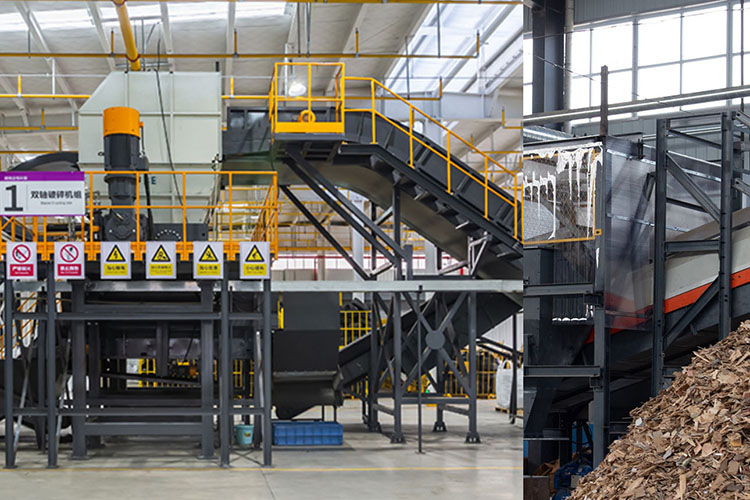Kitchen waste refers to food residues, kitchen waste, oil waste, etc. generated in the catering industry, households, canteens, and other places. This type of garbage, due to its high organic content and easy decay, if not handled properly, can not only cause environmental pollution but also pose a threat to human health. Therefore, how to efficiently and safely handle kitchen waste has become an important task in modern society. Kitchen waste incineration equipment, as an efficient waste treatment technology, is gradually becoming an effective means to solve this problem. This article will explore in detail the advantages and processing capacity of kitchen waste incineration equipment.

One of the main advantages of kitchen waste incineration equipment is its ability to efficiently process organic waste. Traditional waste disposal methods, such as landfill and composting, have slower processing speeds and may generate secondary pollution. Burning technology can convert kitchen waste into harmless substances such as ash and gas in a relatively short period of time, effectively reducing the burden of waste accumulation on the environment. Modern kitchen waste incineration equipment adopts advanced pyrolysis and incineration technology, which makes the combustion of waste more complete and the energy conversion efficiency high, greatly improving the treatment efficiency.
The kitchen waste incineration equipment is not only a simple waste disposal tool, but also has the function of resource recycling. During the incineration process, a portion of the kitchen waste can be converted into usable energy sources such as heat and electricity. These energy sources can be used for production, heating, etc., further improving the efficiency of resource utilization. This feature makes kitchen waste incineration equipment have broad application prospects in the field of environmental protection.

Traditional waste disposal methods, especially landfilling, not only occupy a large amount of land resources, but may also generate harmful gases and leachate due to garbage decomposition, causing secondary pollution. The kitchen waste incineration equipment adopts advanced incinerator technology, which can effectively control temperature, airflow, and combustion process, and minimize the emission of harmful gases. By equipping an efficient flue gas treatment system, kitchen waste incineration equipment can ensure that the exhaust gas meets national environmental standards and reduce pollution to the atmospheric environment.
Kitchen waste incineration equipment has strong adaptability and can handle various types of kitchen waste, including food residues generated by the catering industry, kitchen waste from restaurants, canteens and other places, and even some waste with high oil content. The design and technical configuration of the equipment can be adjusted according to the characteristics of different types of waste, ensuring that each type of waste can be processed most effectively.
Compared to traditional waste disposal methods, kitchen waste incineration equipment has a higher degree of automation, is easy to operate, and has strong equipment stability. Through the intelligent control system, operators can monitor the real-time operation status of the equipment to ensure efficient operation. In addition, the maintenance cost of the equipment is low, which can effectively reduce manpower and material investment, and lower long-term operating costs.
The processing tonnage is one of the important indicators to measure the processing capacity of kitchen waste incineration equipment. With the rapid development of the social economy, the amount of waste generated has increased sharply, especially kitchen waste. There are significant differences in the processing tonnage of kitchen waste incineration equipment to meet the needs of different scales of waste disposal.
For some households or small catering establishments, the amount of kitchen waste generated is relatively small, and small kitchen waste incineration equipment is usually required. The processing tonnage of such equipment is generally 1-3 tons per day. Although the processing capacity of the equipment is relatively small, they use efficient incineration technology, which can achieve maximum energy efficiency with limited processing capacity. The advantage of small equipment lies in its small footprint and easy use, which can meet the needs of small-scale kitchen waste treatment.
For some large catering enterprises, canteens, etc., the amount of kitchen waste generated is relatively large, and medium-sized kitchen waste incineration equipment is usually required. The processing capacity of such equipment is generally between 5-10 tons per day, which can meet the demand for garbage disposal in these places. Medium sized equipment has good performance in incineration efficiency, processing capacity, and energy recovery, and can achieve efficient processing while ensuring environmental protection.

The processing capacity of large-scale kitchen waste incineration equipment is usually over 20 tons per day, and can even reach hundreds of tons. This type of equipment is widely used in urban waste treatment plants, large industrial parks, catering clusters, and other places. Due to its large processing capacity and high degree of equipment automation, large-scale equipment can not only efficiently process large amounts of kitchen waste, but also convert the heat energy in exhaust gas into electrical energy through energy recovery systems, further improving the economic and environmental benefits of the equipment.
Kitchen waste incineration equipment, with its advantages of high efficiency, environmental protection, and resource recycling, has become an important means of treating kitchen waste. Whether it is small, medium or large equipment, flexible solutions can be provided according to different waste disposal needs. In the future, with the increasing demand for kitchen waste treatment, the technology of kitchen waste incineration equipment will continue to innovate, and the processing capacity and environmental performance will be further improved, making greater contributions to achieving the goals of resource utilization, reduction, and harmless waste treatment.
Yongle Environmental Protection is mainly engaged in the research and development, production and sales of complete sets of technical equipment for organic solid waste disposal and comprehensive utilization. Production and manufacturing, domestic waste treatment equipment, tire pyrolysis equipment, medical waste disposal equipment, hazardous waste disposal equipment, and achieve efficient and comprehensive utilization of resources through independently developed low-temperature anaerobic pyrolysis equipment technology solutions.
Tags:Advantages and tonnage of kitchen waste incineration equipment,kitchen waste incineration equipment,YONGLE GROUP
 Latest news
Latest news


























